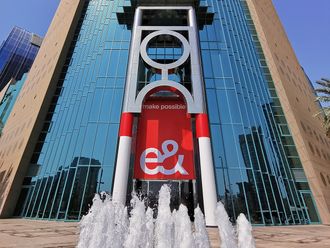Dubai: A month for jargon busters — what with QE (quantitative easing) partially responsible for on-going problem PIGs and its correlation to a bouncing Bric.
Lost in these words is this week's point: despite the well-voiced case for growth in Brazil, Russia, India and China (Bric), the Bric has always been of the bouncy-type, prone to correction.
For investors putting large sums of capital into either a straight Bric vehicle or its constituents, it is worth remembering that a 50 per cent fall in an asset requires the asset to grow 100 per cent simply to get your capital back. The perils of downward deviation.
Risk? Well it didn't seem to matter as we entered the final quarter and equity markets headed into a bull period.
The Gulf News benchmark scores for 52 weeks looking a lot healthier post-September than pre-September.
Now the bull has entered into a Pamplona style frenzy; and like most San Fermin festivalgoers, most investors will come through the current turbulence with the "oooh, ah, turbulent, but we-expected-that" feeling, but there will be some that get gorged, especially those who buy at a top and sell at the panic.
The current bull-agitation, like most general agitations, is complex. If it were down to one reason, then great: enter the aggressive speculator who bets on one-reason falls.
Complexities
China inflation: Of course it had to happen, but higher than expected is not good;
India: What will the corruption fallout do to stock confidence?
North Korea: Why are they getting their toys out now?
And will Ireland lead the PIGS (Portugal, Ireland, even Italy, Greece and Spain) into a Pamplona-style debt panic?
So we now have reason to panic. Calm please. Is Bric still worth holding? The well-voiced case for growth remains: firstly, massive human capital; still underdeveloped economies, with abounding natural resources. The case for growth remains strong, current panics aside.
What is the downside risk? Well who knows, but one way to look at it is to look at standard deviation on Bric assets.
Table shows three-year standard deviation on three assets: the Goldman Sachs Bric fund, after all they came up with the "Bric concept" back in 2001; Mark Mobius' Templeton Bric fund and the Bric Index itself.
Context
To try and put this risk into context. US funds composed of US equities are hovering around the 20 per cent mark for three years including the post Lehman dramas, although more normal ten year US volatility (standard deviation) would be around 15-16 per cent.
One of the biggest influences on the actual risk/deviation of your Bric asset will be the actual composition of the Bric components.
As China's holding is typically high, then Chinese woes might be slightly more important than, say, Indian corruption woes. See Table 2.
All of this pales into more insignificance if you are committed to a buy-and-hold growth story.
Yes, deviation will affect performance, but you are banking on the growth story eventually winning the day. In which case, let's finish with one top-tip: the S&P Bric 40.
It is one of the more popular index trackers doing the rounds at present.
According to S&P, more than half of the index linked Bric funds have exposure to this tracker. That is a high recommendation.
The writer is the Chairman of Mondial Financial Partners.











